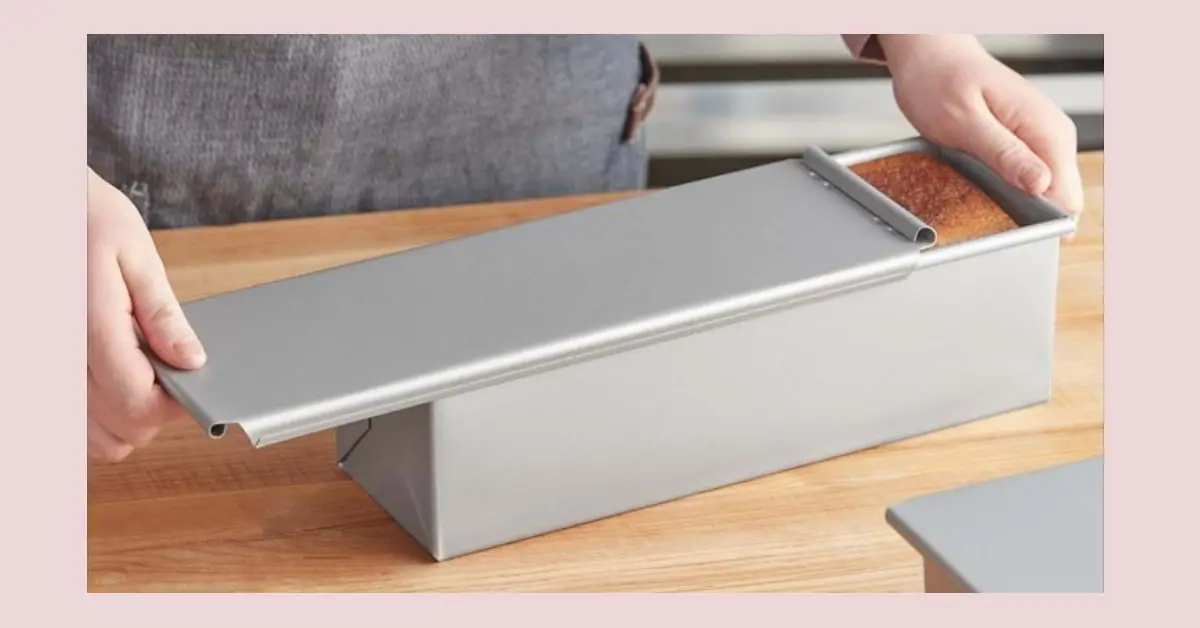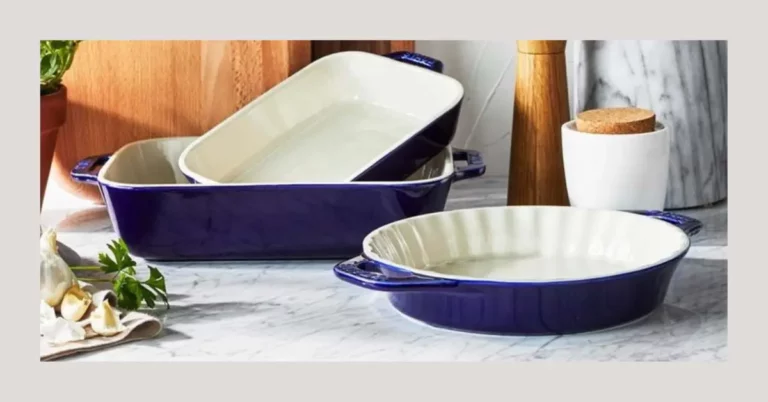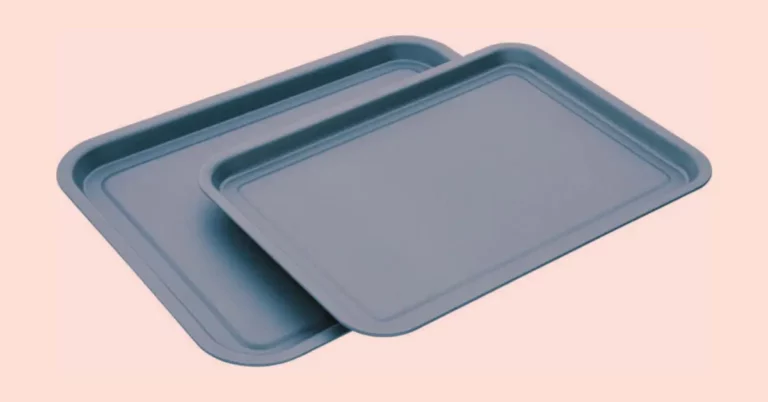Disclosure: As an Amazon associate, I may earn from qualifying purchases
Building upon our previous exploration of bread pans and molds with lids, this article delves further into the intricacies of these invaluable baking tools.
As we continue our journey through the realm of bread perfection, we will address additional frequently asked questions surrounding these specialized equipments.
Delve into the reasons why lidded bakeware are a baker’s secret weapon, uncover tips for achieving optimal results, and explore alternative lid options for those seeking creative solutions.
We will help you expand your knowledge and take your bread-baking prowess to new heights with this continuation of our in-depth exploration of baking dishes with lids.
As we continue our journey through the realm of bread perfection, we will address additional frequently asked questions surrounding these specialized equipments.
Delve into the reasons why lidded bakeware are a baker’s secret weapon, uncover tips for achieving optimal results, and explore alternative lid options for those seeking creative solutions.
We will help you expand your knowledge and take your bread-baking prowess to new heights with this continuation of our in-depth exploration of baking dishes with lids.
Frequently Asked Questions
What can I cover my bread with if I don't have plastic wrap?
If you don’t have plastic wrap, there are several other options for covering your bread. You could use a clean kitchen towel or a reusable silicone cover specifically designed for baking.
You could also place your bread in a clean paper bag or in an airtight container with a lid.
If you’re storing it in the refrigerator, you can use aluminum foil to cover it.
Just make sure the food is completely cool before covering it to prevent condensation from forming and making it soggy.
You could also place your bread in a clean paper bag or in an airtight container with a lid.
If you’re storing it in the refrigerator, you can use aluminum foil to cover it.
Just make sure the food is completely cool before covering it to prevent condensation from forming and making it soggy.
What is the best way to cover fresh bread?
The best way to cover fresh bread is to wrap it in a clean kitchen towel or linen cloth. This will protect it from dust and insects while still allowing it to breathe and maintain its crust.
If you prefer to use something more airtight, you can use a reusable food wrap or a plastic bag that is specifically designed for bread.
Just make sure to allow the bread to cool completely before wrapping it to prevent moisture buildup.
If you prefer to use something more airtight, you can use a reusable food wrap or a plastic bag that is specifically designed for bread.
Just make sure to allow the bread to cool completely before wrapping it to prevent moisture buildup.
Can I cover my dough with Saran Wrap?
Yes, you can cover your dough with Saran Wrap (or any other type of plastic wrap) to keep it from drying out or forming a skin while it rises. It is a common method used in bread baking.
Ensure the wrap is not too tight as the dough will rise and expand. Alternatively, you can use a damp kitchen towel to cover the dough.
Ensure the wrap is not too tight as the dough will rise and expand. Alternatively, you can use a damp kitchen towel to cover the dough.
Should I cover bread with towel or saran wrap?
Either a towel or plastic wrap can be used to cover bread. A towel is a traditional way to cover bread and can help absorb any moisture, but it can also allow air in and dry out the crust.
Plastic wrap creates a tighter seal and can help keep the bread moist, but can also cause condensation to form and make the crust soggy. It really depends on personal preference and the specific recipe.
Some recipes may specify to cover the bread with a towel, while others may recommend using plastic wrap.
Plastic wrap creates a tighter seal and can help keep the bread moist, but can also cause condensation to form and make the crust soggy. It really depends on personal preference and the specific recipe.
Some recipes may specify to cover the bread with a towel, while others may recommend using plastic wrap.
What is better than Saran Wrap?
There are several alternatives to Saran Wrap that can be used to cover food. Some popular options include:
- Beeswax wraps: These are made of fabric coated with beeswax, which makes them a natural and reusable alternative to plastic wrap.
- Silicone stretch lids: These are stretchable silicone lids that can be used to cover bowls, jars, and other containers. They are reusable and can be washed and used again.
- Reusable food storage bags: These are similar to plastic bags, but they are made of silicone or other food-safe materials that can be washed and used again.
- Glass containers with lids: These are a great alternative to plastic containers and can be used to store food in the refrigerator or freezer.
What is a Scottish pan loaf?
A Scottish pan loaf is a type of bread loaf that is traditionally baked in a rectangular, lidded bread pan known as a “pan loaf tin” in Scotland.
The bread is typically made with a simple white flour, water, salt, and yeast dough, and is characterized by its soft, slightly dense texture and square-shaped slices.
Scottish pan loaves are a popular type of bread in Scotland and are often enjoyed sliced and toasted for breakfast or as the base for sandwiches.
The bread is typically made with a simple white flour, water, salt, and yeast dough, and is characterized by its soft, slightly dense texture and square-shaped slices.
Scottish pan loaves are a popular type of bread in Scotland and are often enjoyed sliced and toasted for breakfast or as the base for sandwiches.
What is a magic line loaf pan?
Magic Line is a brand of bakeware that produces high-quality aluminum loaf pans in various sizes and shapes. These pans are known for their durability, even heat distribution, and ability to produce consistently excellent results.
The Magic Line loaf pans come in different sizes, including standard loaf pans, mini loaf pans, and specialty pans for different types of bread.
The Magic Line loaf pans come in different sizes, including standard loaf pans, mini loaf pans, and specialty pans for different types of bread.
Do you need to grease foil loaf pans?
Yes, it is recommended to grease foil loaf pans to prevent the bread from sticking to the pan.
Even though some foil pans have a non-stick coating, it’s still a good idea to grease them lightly with butter, oil, or cooking spray before adding the bread batter to ensure easy release after baking.
Even though some foil pans have a non-stick coating, it’s still a good idea to grease them lightly with butter, oil, or cooking spray before adding the bread batter to ensure easy release after baking.
Why put bread in Dutch oven?
Putting bread in a Dutch oven is a popular baking technique that helps create a crispy crust and a soft, chewy interior.
The Dutch oven traps the steam released from the bread during baking, which creates a moist environment that helps the dough rise and also creates a crust that is crispy on the outside and soft on the inside.
Moreover, the heavy, thick walls of the Dutch oven retain and distribute heat evenly, creating an ideal baking environment.
The Dutch oven traps the steam released from the bread during baking, which creates a moist environment that helps the dough rise and also creates a crust that is crispy on the outside and soft on the inside.
Moreover, the heavy, thick walls of the Dutch oven retain and distribute heat evenly, creating an ideal baking environment.
What is the best pan for crusty bread?
The best pan for crusty bread is usually a Dutch oven, which is a heavy cast iron or enamel-coated pot with a tight-fitting lid.
The Dutch oven traps steam during the baking process, creating a humid environment that helps to form a crispy crust.
Other options include baking stones or tiles, which can also help to create a crispy crust.
The Dutch oven traps steam during the baking process, creating a humid environment that helps to form a crispy crust.
Other options include baking stones or tiles, which can also help to create a crispy crust.
How do you keep homemade baked bread crusty?
Try the following to keep your bread crusty at home:
It is key to remember that bread will eventually become stale no matter how it’s stored. To refresh stale bread, you can wrap it in foil and warm it in a 350°F oven for 10-15 minutes.
- Allow the bread to cool completely on a wire rack before storing.
- Once it has cooled, place it in a paper bag instead of a plastic bag. A paper bag allows it to breathe and prevents moisture buildup, which can make the crust soft.
- Alternatively, you can store it in a bread box or a bread bin. These containers are designed to keep the bread crusty by allowing air to circulate.
- If you don’t have a bread box or a paper bag, you can also store it in a linen or cotton bag. These bags also allow the dough to breathe and prevent moisture buildup.
It is key to remember that bread will eventually become stale no matter how it’s stored. To refresh stale bread, you can wrap it in foil and warm it in a 350°F oven for 10-15 minutes.
How long should bread rise before baking?
The length of time that bread should rise before baking can vary depending on the recipe and the temperature of the environment. In general, it should rise until it has doubled in size.
This can take anywhere from 1 to 2 hours, depending on the conditions. It’s best to follow the recipe instructions closely and keep an eye on the dough during the rising process.
If the dough rises too much, it can collapse during baking, while if it doesn’t rise enough, the bread will be dense and heavy.
This can take anywhere from 1 to 2 hours, depending on the conditions. It’s best to follow the recipe instructions closely and keep an eye on the dough during the rising process.
If the dough rises too much, it can collapse during baking, while if it doesn’t rise enough, the bread will be dense and heavy.




